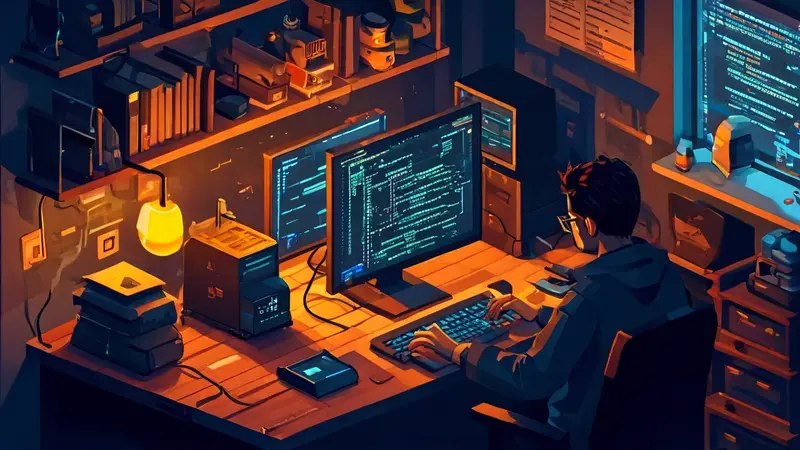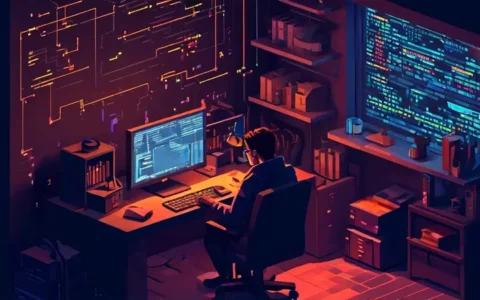
Programming desktop, in English, refers to the "Desktop Environment" tailored for facilitating software development tasks. This includes tools and applications that a programmer uses regularly. For instance, a typical setup might contain an advanced code editor, a version control system, and debuggers. The configuration of these tools allows for customized shortcuts and scripting to enhance productivity, optimizing the workflow for coding tasks.
I. INTRODUCTION TO PROGRAMMING DESKTOP ENVIRONMENTS
A programming desktop environment comprises various digital tools and applications that enhance a developer's efficiency and productivity. These specialized desktops are usually equipped with an arsenal of essential software designed to create a seamless programming experience. The choice of desktop environment can affect a programmer's speed and effectiveness when crafting code.
II. KEY COMPONENTS OF A PROGRAMMING DESKTOP
Programming desktops are thoughtfully set up to include certain core components that are integral to the developer workflow. These typically include:
A. Text Editors and IDEs
Integrated Development Environments (IDEs) and text editors form the central component of a programming desktop. They provide powerful features such as syntax highlighting, code completion, and debugging tools, which are indispensable for developers writing and maintaining code.
B. Command Line Interfaces (CLI)
Command Line Interfaces offer direct interaction with the computer's operating system and software. Programmers often prefer CLIs for their speed and low overhead compared to graphical user interfaces (GUIs).
C. Version Control Systems
A Version Control System (VCS) like Git is crucial for tracking changes to code, collaborating with other developers, and managing multiple versions of a project simultaneously.
D. Developer Tools and Utilities
Various developer tools and utilities such as database management systems, containerization software, and API testing tools are key elements that support a wide range of development tasks.
III. OPTIMIZING THE PROGRAMMING DESKTOP
For a programming desktop to be effective, it must be optimized for the developer's specific needs. This includes:
A. Customizing the Work Environment
Customizing the desktop setup to align with personal preferences and the demands of specific projects can lead to improved coding efficiency.
B. Streamlining Workflow with Automation
Automation tools can streamline repetitive tasks, saving time and reducing potential errors. This leads to a more focused and uninterrupted coding experience.
C. Learning Shortcuts and Advanced Features
Mastering keyboard shortcuts and advanced features of the tools used can significantly reduce development time and make the coding process more enjoyable.
IV. CHOOSING THE RIGHT PROGRAMMING DESKTOP
The choice of a programming desktop environment should be guided by the developer's primary programming language, project requirements, and personal workflow preferences. Factors such as cross-platform compatibility and community support are also important to consider.
A. Popular Programming Desktop Environments
Some of the most popular environments and tools include Visual Studio Code, JetBrains suite, and Linux distributions like Ubuntu which are often preferred for their robustness and developer-friendly features.
B. Custom vs. Pre-configured Environments
Developers can choose between setting up a custom environment tailored specifically to their needs or opting for pre-configured environments that offer a ready-to-code setup.
V. MAINTAINING A HEALTHY PROGRAMMING DESKTOP
Regular maintenance and updates are crucial for ensuring that the programming desktop environment remains efficient and secure.
A. Updating Software and Tools
Keeping all tools and components up to date ensures access to the latest features and security patches, protecting projects from potential vulnerabilities.
B. Backup and Recovery Strategies
Implementing robust backup and recovery strategies is essential for safeguarding code against data loss or corruption.
C. Monitoring System Performance
Monitoring tools can help identify bottlenecks or issues affecting the performance of the desktop environment, allowing for timely optimizations and fixes.
VI. FUTURE TRENDS IN PROGRAMMING DESKTOPS
The evolution of programming desktop environments is influenced by emerging technologies and changing developer needs.
A. Cloud-Based Development Environments
Cloud-based environments are gaining popularity for their ability to provide flexible and scalable resources, facilitating collaboration and remote work.
B. Integration with AI and Machine Learning
Integration with AI and Machine Learning tools is beginning to change the landscape of programming by automating complex tasks and providing intelligent code assistance.
C. Cross-Platform Development Solutions
As the industry shifts towards a more connected ecosystem, cross-platform development solutions are becoming vital for developers who need to target multiple operating systems and devices.
The alignment of a programming desktop environment with a developer's workflow is paramount to achieving both efficiency and effectiveness in software development. By selecting appropriate tools and adopting best practices for organizing and maintaining the desktop, programmers can create a personalized space that is both powerful and conducive to their coding endeavors.
相关问答FAQs:
什么是编程桌面的英文表达?
编程桌面的英文表达是 "programming desktop"。在英语中,"programming"表示编程的意思,而 "desktop" 表示桌面的意思。
编程桌面的英文表达有其他的形式吗?
是的,编程桌面还有其他的英文表达方式。一种常见的表达是 "coding desktop"。这里的 "coding" 意味着编码或编程的过程。
编程桌面在计算机领域有什么用途?
编程桌面在计算机领域有多种用途。它是程序员或开发人员的工作平台,用于设计、开发、测试和调试软件应用程序。编程桌面提供了一个集成的开发环境,使得编写代码、构建项目和分析程序更加高效。它通常包括编程工具,如文本编辑器、集成开发环境(IDE)、编译器和调试器,以及其他辅助工具,如版本控制系统和测试工具。
编程桌面还提供了方便的界面和功能,用于组织和管理源代码、依赖项和项目文件。它使开发人员能够轻松地在多个文件和模块之间切换,并提供自动完成、语法高亮和调试功能,以提高编码效率和准确性。
总的来说,编程桌面是程序员日常开发的重要工具,它为他们提供了一个集成的环境,以便更轻松地创建和维护高质量的软件应用程序。
文章标题:编程桌面英文是什么,发布者:不及物动词,转载请注明出处:https://worktile.com/kb/p/1583722

 微信扫一扫
微信扫一扫  支付宝扫一扫
支付宝扫一扫 



